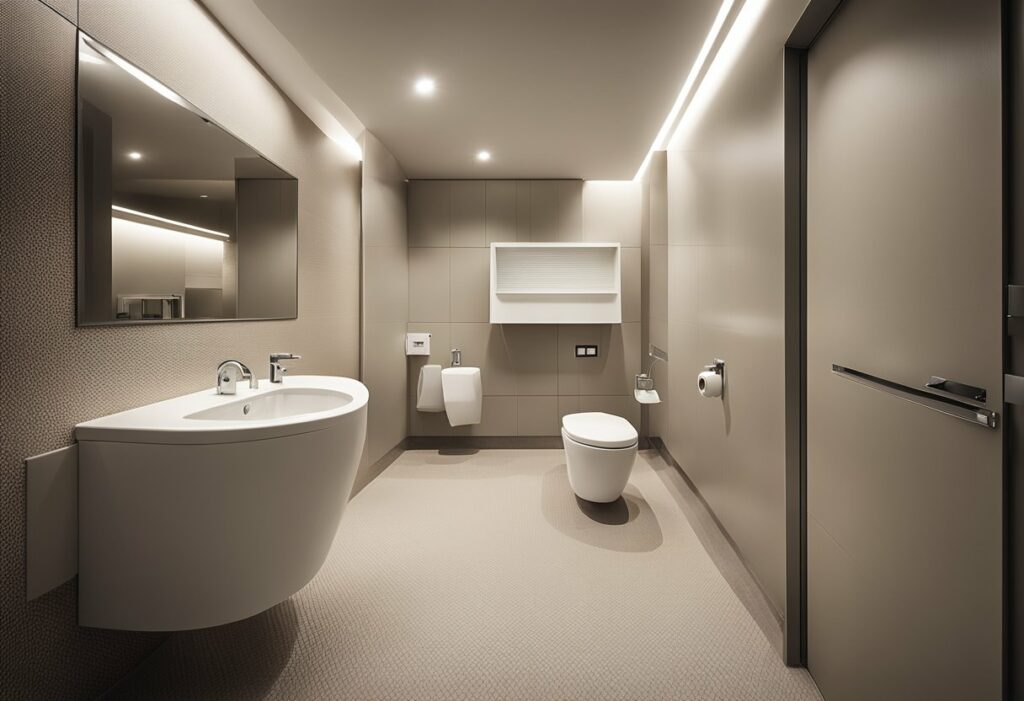Unisex Toilet Design: The Future of Gender-Neutral Restrooms
Unisex toilet design is a topic that has gained increasing attention in recent years. The traditional gender-segregated toilet facilities are gradually being replaced by more inclusive and gender-neutral designs. Unisex toilets are not only a solution for the transgender community, but they also cater to individuals who prefer more privacy and comfort.
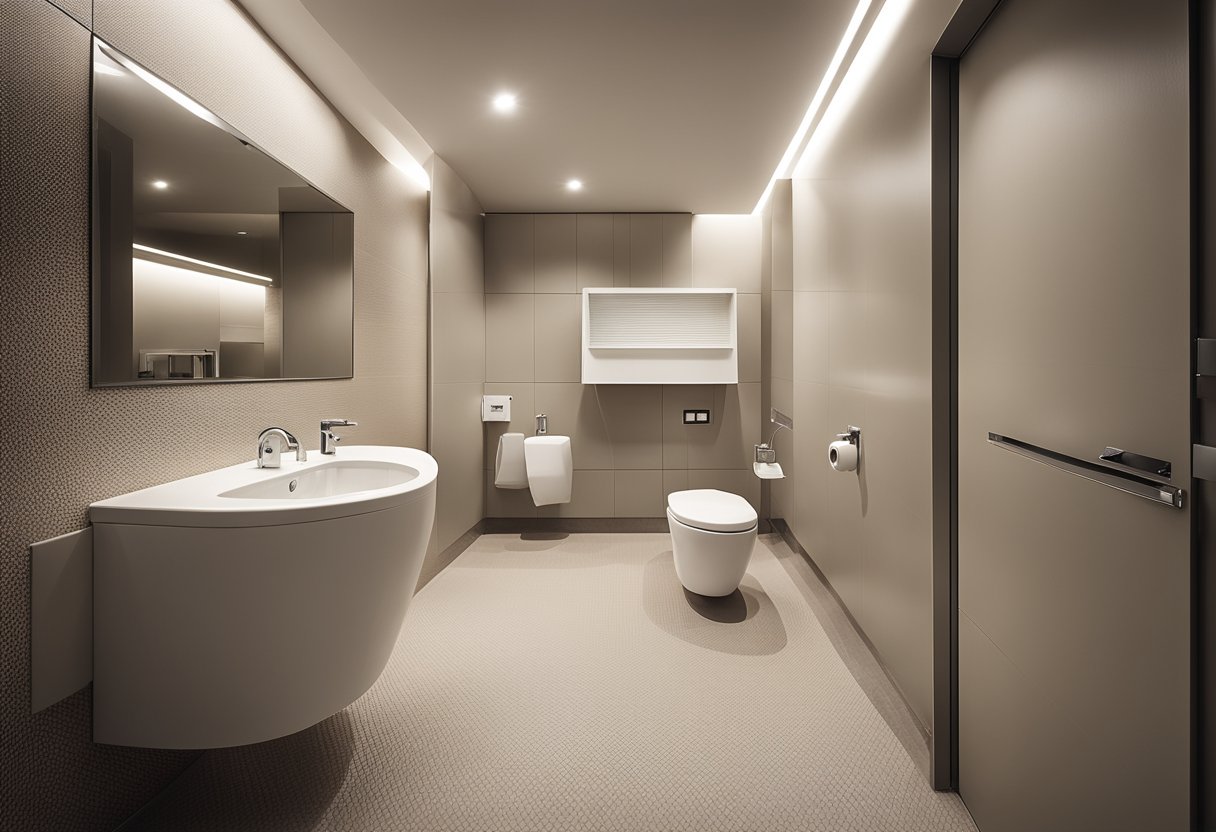
Designing unisex toilets requires careful consideration of several factors, including accessibility, safety, and privacy. The design should be functional and accessible to all users, regardless of their gender or physical abilities. Unisex toilet design should also prioritize safety and privacy by ensuring that users feel comfortable and secure while using the facilities.
Key Takeaways
- Unisex toilet design promotes inclusivity and caters to individuals who prefer more privacy and comfort.
- Designing unisex toilets requires careful consideration of several factors, including accessibility, safety, and privacy.
- Unisex toilet design should prioritize safety and privacy by ensuring that users feel comfortable and secure while using the facilities.
Design Fundamentals of Unisex Toilets
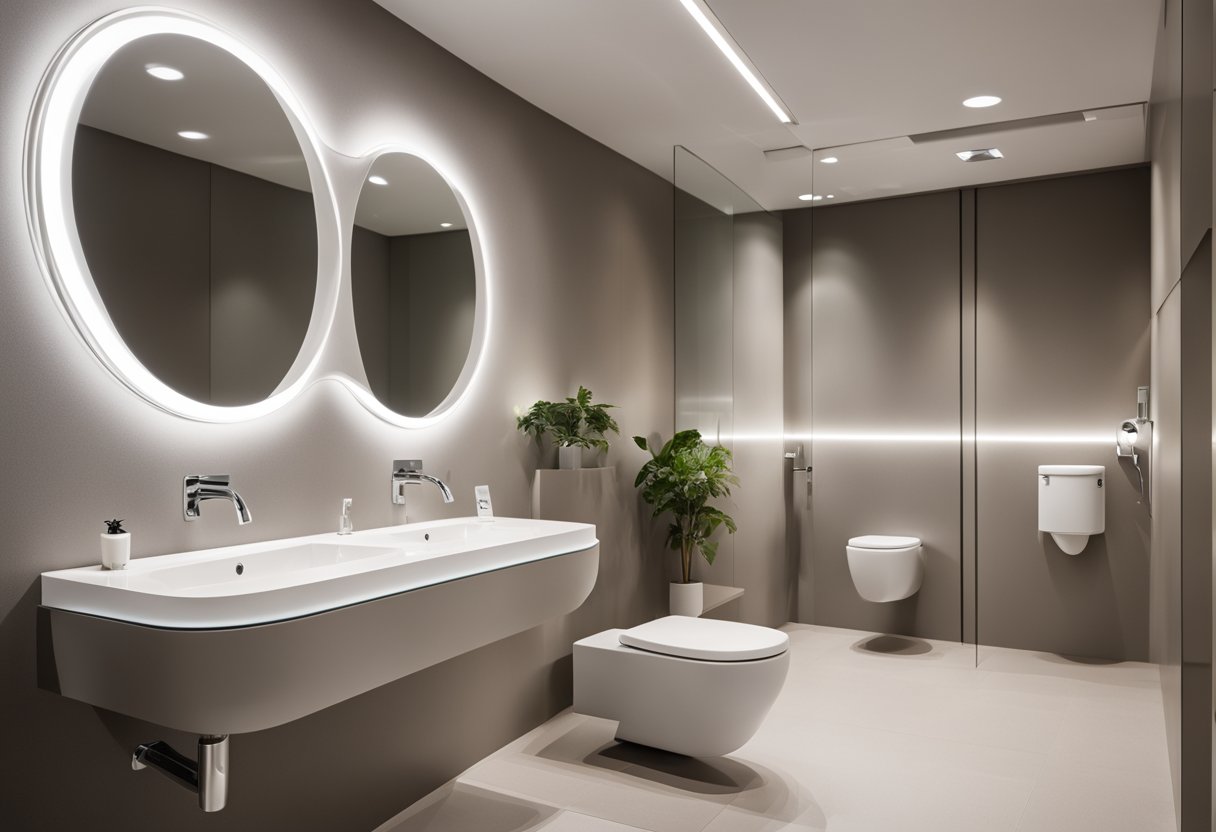
When designing unisex toilets, there are several design fundamentals that must be considered. These design principles should ensure that the toilet is accessible to everyone, regardless of age, gender, or ability.
Universal Design Principles
One of the primary design principles of unisex toilets is universal design. This design principle is based on the idea that products and environments should be designed to be usable by all people, to the greatest extent possible, without the need for adaptation or specialized design. When designing unisex toilets, this means that the toilet should be accessible to everyone, regardless of their age, gender, or ability.
Privacy and Safety Features
Another important consideration when designing unisex toilets is privacy and safety. To ensure that everyone feels safe and secure when using the toilet, it is essential to include features such as lockable doors, privacy partitions, and adequate lighting. Additionally, it is important to ensure that the toilet is located in a safe and well-lit area, with clear signage directing users to the toilet.
Accessibility for All
Finally, when designing unisex toilets, it is important to consider accessibility for all. This means that the toilet should be accessible to people with disabilities, elderly people, and small children. To ensure accessibility, the toilet should be designed to be wheelchair accessible, with grab bars and handrails to assist people with mobility issues. Additionally, the toilet should be designed to be easy to use for people with visual or cognitive impairments, with clear signage and contrasting colours to aid navigation.
Overall, when designing unisex toilets, it is essential to consider the needs of all users. By following universal design principles, including privacy and safety features, and ensuring accessibility for all, you can create a toilet that is welcoming and accessible to everyone.
Social and Legal Considerations
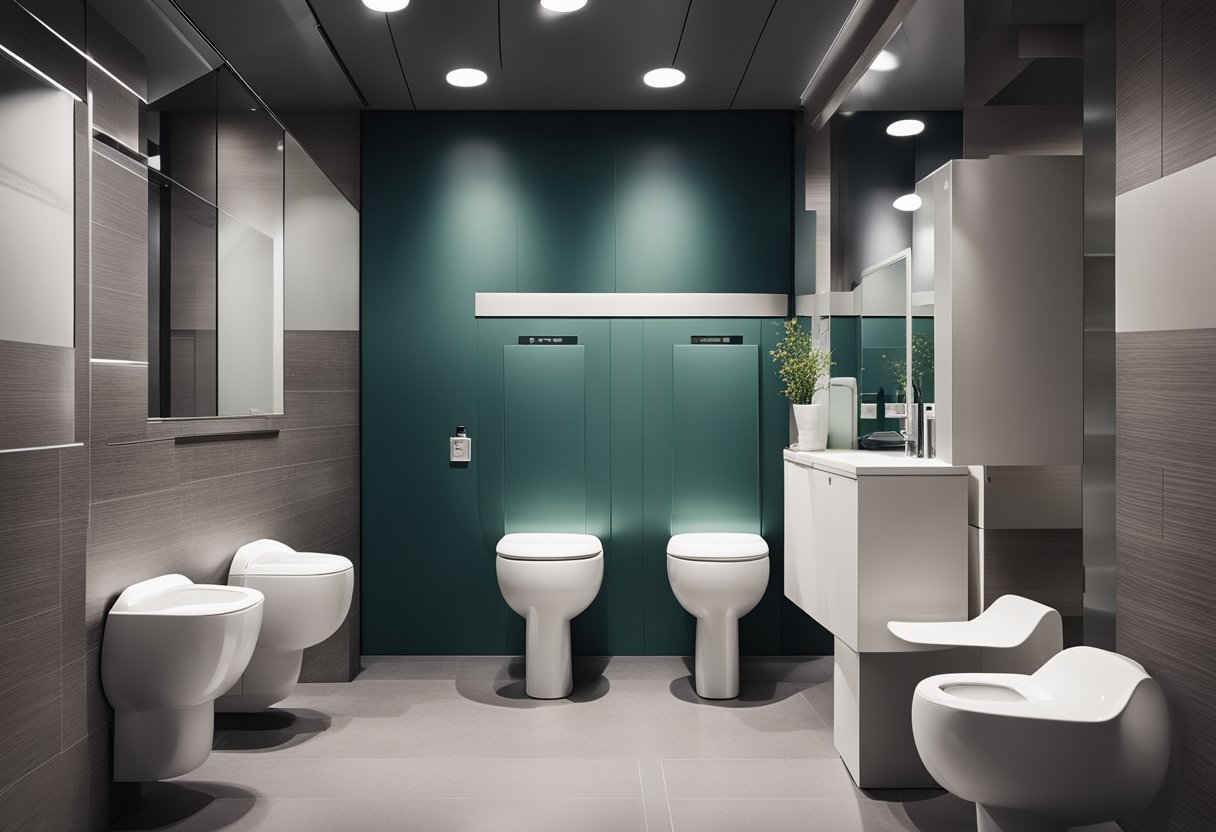
When designing unisex toilets, there are several social and legal considerations that must be taken into account to ensure inclusivity and compliance with the law.
Gender Identity and Equality
Unisex toilets promote gender inclusivity and equality by providing a safe and welcoming space for all genders. They eliminate the need for segregated bathrooms and allow individuals to use the facilities that correspond to their gender identity, regardless of their biological sex.
By providing all-gender restrooms, you are creating a safe space for transgender, intersex, non-binary, and gender non-conforming individuals who may feel uncomfortable or unsafe in segregated bathrooms. This promotes equity and inclusivity in your establishment and ensures that everyone feels valued and respected.
Legal Framework and Compliance
Designing unisex toilets also requires compliance with legal frameworks and regulations to ensure that your establishment is equitable and accessible to all. In the UK, the Equality Act 2010 prohibits discrimination based on gender identity, which includes access to facilities such as toilets.
When designing unisex toilets, it is important to consider the legal requirements for signage, accessibility, and safety. Signage should be clear and visible, indicating that the facilities are unisex and accessible to all genders. The facilities should also be accessible to people with disabilities, carers, and parents with children.
In addition, it is important to consider the potential for verbal harassment or physical assault in unisex toilets. Design features such as individual stalls with locking doors, adequate lighting, and emergency alarms can help prevent these incidents and ensure the safety of all users.
By considering these social and legal considerations when designing unisex toilets, you can create a welcoming and equitable space for all individuals, regardless of their gender identity.
Frequently Asked Questions
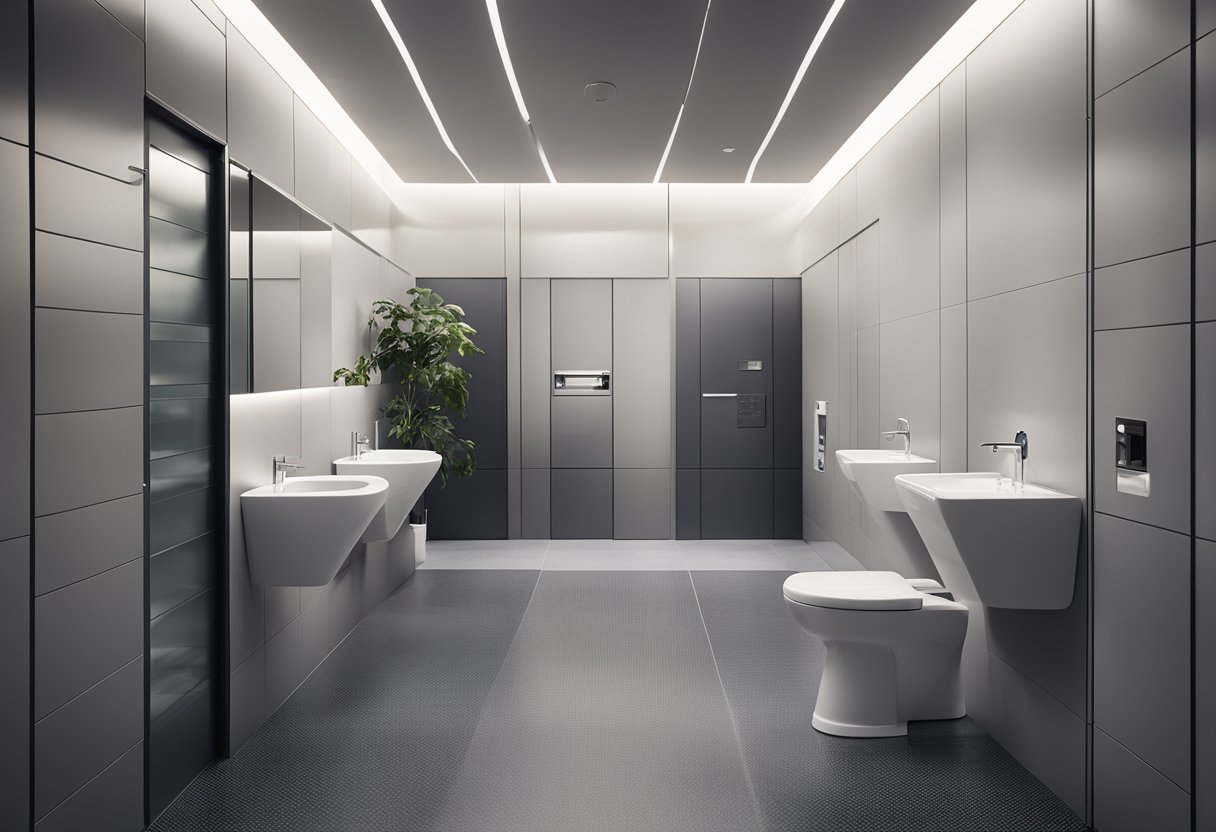
How can we create a modern and inclusive restroom design that caters to everyone?
Creating a modern and inclusive restroom design that caters to everyone involves a few key considerations. Firstly, it is important to ensure that the space is accessible to people with disabilities, including those with mobility, visual, and auditory impairments. Secondly, it is essential to create a welcoming environment that is free from discrimination and harassment. This can be achieved through thoughtful design choices, such as the use of gender-neutral signage and the inclusion of private cubicles that offer maximum privacy.
What are the essential features to include in a unisex toilet plan to ensure comfort and privacy?
To ensure comfort and privacy in a unisex toilet plan, it is important to include features such as private cubicles, lockable doors, and adequate space for manoeuvring. Additionally, it is important to provide essential amenities such as toilet paper, soap, and hand dryers or towels. Other features that can enhance comfort and privacy include soundproofing, ambient lighting, and air fresheners.
What regulations must be considered when designing unisex toilets in public spaces?
When designing unisex toilets in public spaces, it is important to consider a range of regulations. These may include building codes, health and safety regulations, and disability access requirements. Additionally, it is important to consider local laws and regulations related to gender identity and discrimination.
How do unisex bathroom facilities differ across Europe, and what can we learn from them?
Unisex bathroom facilities differ across Europe in terms of design, layout, and amenities. For example, some facilities may offer private cubicles with full-height doors, while others may offer open-plan designs with low-level partitions. One thing that is consistent across Europe, however, is the emphasis on creating an inclusive and welcoming environment for all users. By studying these facilities, we can learn valuable lessons about what works and what doesn’t in unisex restroom design.
What signage solutions work best for indicating unisex toilets while being clear and welcoming?
Signage solutions that work best for indicating unisex toilets while being clear and welcoming include the use of gender-neutral symbols and colours, as well as clear and concise text. It is important to avoid using language that may be exclusionary or offensive, and to ensure that the signage is visible and easy to understand for all users.
In what ways do gender-neutral bathrooms differ from unisex ones, and how does this impact design?
Gender-neutral bathrooms differ from unisex ones in that they are designed to be inclusive of all gender identities, rather than simply accommodating male and female users. This can impact design in a number of ways, such as the inclusion of additional amenities such as menstrual product dispensers and urinals that are designed for use by people of any gender. Additionally, gender-neutral bathrooms may require additional space and privacy features to ensure that all users feel comfortable and safe.

